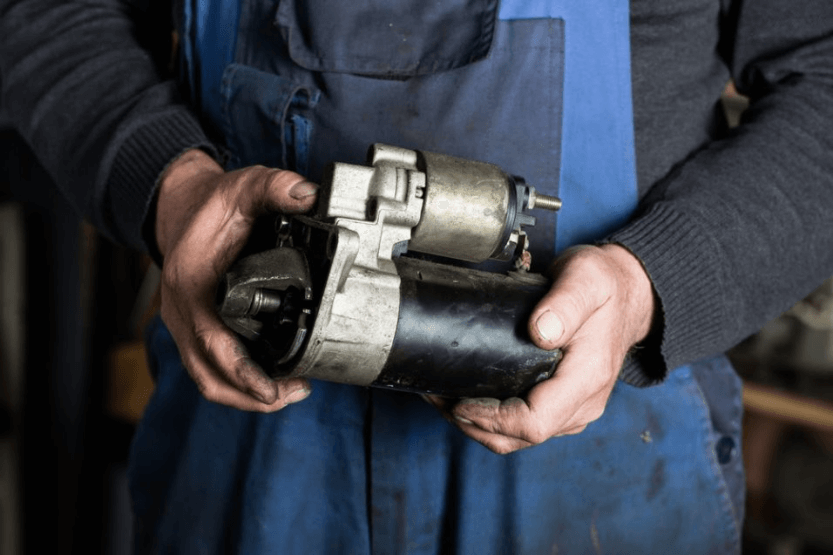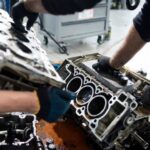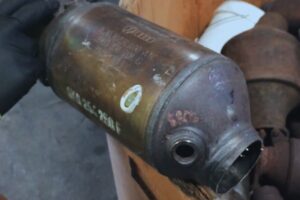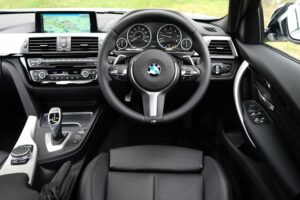When you turn the key in your car’s ignition, you expect to hear the engine start up. However, sometimes instead of the engine roaring to life, you hear nothing at all. This can be a frustrating and confusing experience, especially if you’re not sure what’s causing the issue.
One of the most common reasons for a car not starting is a dead battery, but what if you don’t hear any clicking sounds?
If your car won’t start and there’s no clicking sound, it could be due to a few different issues. One possibility is that the battery is completely dead, which means there’s not enough power to even make a clicking sound.
Another possibility is that there’s an issue with the starter motor or the solenoid that controls it. In some cases, a faulty ignition switch could also be the culprit. Understanding these potential causes can help you diagnose and fix the problem so you can get back on the road as soon as possible.
Why Your Car Won’t Start (No Clicking)

When you turn the key in the ignition and your car won’t start, it can be frustrating and confusing. If you don’t hear any clicking noise, this usually indicates that there is an issue with the battery or the starter.
Here are a few reasons why your car won’t start and there is no clicking noise:
Dead Battery
A dead battery is one of the most common reasons why your car won’t start. If the battery is dead, you won’t hear any clicking or cranking sound when you turn the key. The battery provides the power needed to start the engine, and if it’s dead, it won’t be able to do so.
You can jump-start your car using jumper cables and another vehicle with a good battery. If this works, it means that your battery is dead and needs to be replaced.
Corroded Battery Terminals
Corroded battery terminals can prevent your car from starting. Corrosion can build up on the battery terminals over time, causing a poor connection between the battery and the starter. If you notice that the battery terminals are corroded, you can clean them with a wire brush or sandpaper.
Loose Battery Connections
If the battery connections are loose, your car won’t start. Check the battery terminals and make sure they are tight and free of corrosion. If the connections are loose, the battery won’t be able to provide the necessary power to start the engine.
Bad Battery Cable
A bad battery cable can also cause your car to not start. The battery cable connects the battery to the starter, and if the cable is damaged or corroded, it can prevent the battery from delivering power to the starter.
If you suspect that the battery cable is the issue, you can test it with a multimeter or have a mechanic inspect it.
Weak Battery
A weak battery can also cause your car to not start. A battery can become weak over time, especially if it’s not maintained properly.
If you notice that your car’s headlights are dim or the radio doesn’t work, it could be a sign that the battery is weak. You can test the battery with a multimeter or have a mechanic test it for you.
Flat Battery
A flat battery is another reason why your car won’t start. A flat battery occurs when the battery has no charge left. This can happen if you leave the lights on overnight or if the battery is old and worn out. If you suspect that the battery is flat, you can try jump-starting the car or have the battery replaced.
Faulty Starter
If the battery is fine, but you still don’t hear any clicking noise, it could be due to a faulty starter. The starter is responsible for turning the engine over when you turn the key.
If the starter is faulty, it won’t be able to turn the engine over, and your car won’t start. In this case, you may need to replace the starter.
Ignition Switch
The ignition switch is responsible for sending power to the starter when you turn the key. If the ignition switch is faulty, it won’t send power to the starter, and your car won’t start.
You can try jiggling the key in the ignition to see if this helps. If it does, it means that the ignition switch is faulty and needs to be replaced.
Bad Alternator
The alternator is responsible for charging the battery while the engine is running. If the alternator is faulty, it won’t be able to charge the battery, and your car may not start the next time you try to turn it on.
You can check the alternator by using a multimeter to test the voltage output. If the alternator is faulty, you’ll need to replace it.
If you’re experiencing any of these issues, it’s best to take your car to a mechanic to have it diagnosed and repaired. Trying to fix the issue yourself can be dangerous and may cause further damage to your car.
How to Troubleshoot a Car That Won’t Start (No Clicking)

When a car won’t start and there is no clicking sound, it is often an indication of an issue with the battery, starter motor, or ignition switch. Here are a few steps to troubleshoot the problem:
Step 1: Check the Battery
The most common reason for a car not starting is a dead battery. Check the battery terminals and cables for any signs of corrosion or looseness. If everything looks good, use a multimeter to check the voltage of the battery.
A fully charged battery should have a voltage of around 12.6 volts. If the voltage is below 12 volts, the battery needs to be recharged or replaced.
Step 2: Check the Starter Motor
If the battery is fine, the next step is to check the starter motor. As per AutoElectro, the starter motor is responsible for turning over the engine. If it is faulty, the engine won’t start.
To check the starter motor, turn on the headlights and try to start the car. If the headlights dim when you turn the key, it is likely a problem with the starter motor.
Step 3: Check the Ignition Switch
If the starter motor is not the problem, the ignition switch may be the culprit. The ignition switch is responsible for sending power to the starter motor. If it is faulty, the starter motor won’t receive any power and the engine won’t start.
To check the ignition switch, turn on the headlights and try to start the car. If the headlights don’t dim when you turn the key, it is likely a problem with the ignition switch.
If none of these steps solve the problem, it may be time to take the car to a mechanic for further diagnosis.
What to Do If Your Car Won’t Start + No Clicking Noise
When you turn the key, and your car won’t start, and there is no clicking noise, it can be frustrating and confusing. Here are some steps to take to troubleshoot the issue:
- Check the battery: A dead battery is a common reason why your car won’t start. If the battery is dead, you’ll typically hear no sound when you turn the key or push the button to start the engine. Check the battery terminals for corrosion and make sure they are tight. If the battery is more than 5-7 years old, it may need to be replaced. Try jump-starting the car using another vehicle or a portable jump starter.
- Inspect the starter motor: If the battery is good, the next step is to check the starter motor. Look for any signs of damage or wear. If the starter motor is damaged, it may need to be replaced. You can also try tapping the starter motor lightly with a hammer while someone turns the key to see if that helps.
- Check the ignition switch: The ignition switch is responsible for sending power to the starter motor. If the switch is faulty, it can prevent the car from starting. Try turning the key to the “on” position and see if the dashboard lights come on. If they don’t, the ignition switch may be the problem.
- Inspect the alternator: The alternator is responsible for charging the battery while the car is running. If the alternator is faulty, it can cause the battery to drain and prevent the car from starting. Use a voltmeter to check the voltage at the battery while the car is running. If the voltage is less than 13.5 volts, the alternator may be the problem.
- Check the fuel system: If the car cranks but doesn’t start, the problem may be with the fuel system. Check the fuel pump, fuel filter, and fuel injectors for any signs of damage or wear. Make sure there is fuel in the tank.
If none of these steps solve the problem, it may be time to take the car to a mechanic for a more in-depth diagnosis.
How to Jumpstart Your Car?

As per Chapel Hill Tire, jumpstarting a car is a simple process that can be done with the help of another vehicle. Here are the steps to jumpstart a car:
Park the vehicles close to each other: Park the two vehicles close to each other, but not touching. Make sure the vehicles are in park or neutral with the handbrakes on.
Attach the jumper cables: Attach the red jumper cable to the positive terminal of the dead battery and then to the positive terminal of the good battery. Attach the black jumper cable to the negative terminal of the good battery and then to a metal surface on the dead car, away from the battery.
Start the good car: Start the good car and let it run for a few minutes.
Start the dead car: Attempt to start the dead car. If it doesn’t start, wait a few more minutes and try again.
Remove the jumper cables: Once the dead car is running, remove the jumper cables in the reverse order. Remove the black cable from the dead car, then the black cable from the good car, then the red cable from the good car, and finally the red cable from the dead car.
Keep the car running: Keep the newly started car running for at least 30 minutes to recharge the battery.
It’s important to note that if the car doesn’t start after a few attempts, it may be a sign of a more serious issue with the battery or alternator and should be checked by a professional mechanic.
In Closing
When a car won’t start and there’s no clicking sound, it can be frustrating and confusing. However, by following the steps outlined in this article, car owners can diagnose and fix the issue themselves or seek professional help if needed.
First, check the battery and connections to ensure there’s enough power to start the engine. If the battery is fine, then inspect the starter motor and solenoid for any signs of damage or wear. If these components are working properly, then the issue may be with the ignition switch or wiring.
It’s important to remember that regular maintenance and care can help prevent issues like a car not starting. This includes keeping the battery charged, replacing worn-out components, and addressing any warning signs or strange noises as soon as possible.
Overall, with a little bit of knowledge and patience, car owners can troubleshoot and fix a car that won’t start and has no clicking sound. By taking the time to properly diagnose and address the issue, drivers can get back on the road safely and confidently.




![Grinding Noise When Braking [9 Possible Causes and How to Fix] grinding noise when braking](https://roadsumo.com/wp-content/uploads/2021/06/grinding-noise-when-braking-150x150.jpg)

![Clicking Noise When Turning [Causes and How to Fix] clicking noise when turning](https://roadsumo.com/wp-content/uploads/2022/12/clicking-noise-when-turning-150x150.jpg)

![Read more about the article How Much Does Paintless Dent Repair Cost? [Full Guide]](https://roadsumo.com/wp-content/uploads/2022/05/how-much-does-paintless-dent-repair-cost-300x200.jpg)
